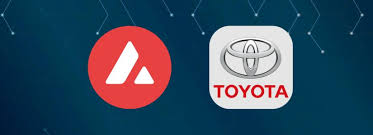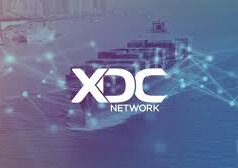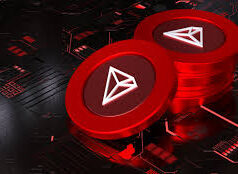The automotive industry is no stranger to innovation, but Toyota is taking things to a new level with its latest venture into blockchain technology. On August 19, 2025, Toyota Blockchain Lab unveiled its Mobility Orchestration Network (MON), a prototype system built on the Avalanche blockchain that aims to transform how vehicles are financed, owned, and transferred. By exploring tokenized ownership, digital leasing, and instant asset transfers, Toyota is positioning itself at the forefront of a seismic shift in mobility finance. This isn’t just about cars—it’s about reimagining them as verifiable, tradable digital assets. Let’s dive into what this means, why Avalanche is the chosen platform, and how this could reshape the future of transportation.
A New Vision for Mobility: The Mobility Orchestration Network
Toyota’s Blockchain Lab, established in 2019, has been quietly exploring how blockchain can streamline automotive processes, from supply chains to customer services. Their latest project, MON, tackles a core challenge in the mobility sector: fragmentation. Vehicles today exist in a web of siloed systems—registries, insurers, manufacturers, and financiers all operate with separate data sets, creating inefficiencies and barriers to seamless transactions. MON seeks to bridge these gaps by creating a decentralized, trust-based digital layer that connects automakers, regulators, service providers, and consumers.
At its heart, MON introduces the concept of a Mobility Oriented Account (MOA), a digital identity for each vehicle that bundles critical data: registration details, technical specifications, maintenance history, and usage records. Think of it as a digital passport for your car, verifiable across borders and systems. By tokenizing these MOAs as non-fungible tokens (NFTs), Toyota aims to enable new financial models, like securitizing vehicle fleets or streamlining leasing agreements. The prototype also supports instant transfers via smart contracts, potentially cutting out cumbersome paperwork and middlemen. This could mean faster, cheaper, and more transparent vehicle financing—whether you’re buying a single car or managing a fleet of autonomous taxis.
Why Avalanche? The Tech Behind the Vision
Toyota’s choice of Avalanche as the backbone for MON is no accident. Avalanche, known for its high-speed, scalable blockchain architecture, offers unique features that align perfectly with the demands of mobility finance. Unlike traditional Ethereum-compatible chains that operate on a single Layer-1 (L1) network, Avalanche supports multiple interoperable L1 chains, or “subnets,” which allow enterprises like Toyota to create customized blockchains tailored to specific needs while maintaining global connectivity. This multi-chain setup ensures sub-second transaction finality, scalability for high-volume data, and compliance with regional regulations—crucial for a global automaker like Toyota, which sold 10.8 million vehicles in 2024.
Avalanche’s Interchain Messaging Protocol (ICM) enables secure communication between these L1 chains, ensuring that data like vehicle ownership or insurance records can flow seamlessly across ecosystems. The prototype includes four specialized L1 chains: one for security-token issuance, another for mobility rights management, a third for service usage (like ride-sharing or EV charging), and a fourth for stablecoin transactions. An identity service links physical vehicles to their digital MOAs, while a trust gateway connects off-chain data—like government registries—to the blockchain, ensuring privacy and regulatory compliance. As Avalanche’s team put it on X, “Every other chain is one lane. Avalanche is the highway.”
Tokenizing the Future: From NFTs to Financial Instruments
One of MON’s most ambitious ideas is the “Fungibility Ladder,” a framework that transforms vehicles from unique, non-fungible assets into liquid financial instruments. At the base, each vehicle’s MOA is represented as an NFT, capturing its unique history and ownership. These NFTs can be bundled into portfolios—think fleets of delivery trucks or ride-sharing cars—which can then be securitized into fungible tokens tradable on financial markets. This opens the door to innovative financing models, like investment funds for electric vehicle fleets or tokenized leasing agreements that lower costs for operators in emerging markets.
For example, a logistics company could tokenize a fleet of trucks, allowing investors to buy into the portfolio and share in the revenue from deliveries. Similarly, ride-hailing platforms could raise capital by issuing tokens backed by their vehicles, potentially at lower costs than traditional loans. For individual buyers, tokenized records could eliminate disputes over a used car’s history, providing a tamper-proof ledger of maintenance and accidents. Toyota’s white paper suggests this could extend to secondary markets, insurance, and even carbon credit tracking, making vehicles not just modes of transport but nodes in a global financial network.
Breaking Down Silos: Solving Mobility’s Trust Problem
The mobility industry is riddled with inefficiencies caused by fragmented ecosystems. Vehicle data is often locked in proprietary databases, and cross-border transactions—like transferring a car’s title or verifying its emissions compliance—are bogged down by inconsistent regulations and manual processes. MON’s “Trust Chains” aim to automate these interactions by aggregating institutional proofs (titles, registrations), technical proofs (VINs, maintenance records), and economic proofs (usage data, revenue). This creates a single, verifiable source of truth for each vehicle, reducing due diligence costs and enabling real-time coordination among stakeholders.
For instance, an insurer could instantly verify a vehicle’s accident history, or a regulator could confirm compliance with emissions standards, all without sifting through paper records or disparate systems. MON’s design also respects regional differences, allowing local instances to comply with national laws while interoperating globally via Avalanche’s architecture. This balance of local control and global connectivity could make MON a blueprint for other industries grappling with fragmented data, from healthcare to supply chains.
Cons and Open Questions
While MON’s vision is compelling, it’s still a prototype, and significant hurdles remain. Scaling from a sandbox to real-world deployment will require buy-in from regulators, insurers, and other automakers—no small feat in an industry known for slow adoption. The white paper doesn’t address how tokenization might impact car prices or affordability for everyday consumers. Could increased investor demand drive up costs, or will streamlined financing make vehicles more accessible? These questions are critical as vehicles become financial assets.
Privacy is another concern. While Avalanche’s identity service and trust gateway prioritize data protection, linking sensitive vehicle data to a blockchain raises questions about cybersecurity and user consent. Toyota will need to navigate these issues carefully to maintain consumer trust. Finally, the success of MON hinges on ecosystem adoption. As one X post noted, “If MON scales to high-volume real-world use, this could increase demand for AVAX,” but that’s a big “if” requiring coordination across a complex industry.
A Blueprint for Mobility
Toyota’s MON is more than a tech experiment—it’s a bold step toward redefining mobility as a networked, financialized ecosystem. By leveraging Avalanche’s scalable, interoperable blockchain, Toyota is addressing real-world pain points in vehicle finance and data sharing. If successful, MON could enable everything from cheaper fleet financing to transparent used-car markets, all while boosting Avalanche’s real-world adoption. Naohiko Ueno, a Toyota Blockchain Lab contributor, captured the excitement on X: “Avalanche × TOYOTA Blockchain Lab. With strong support from many, this step became reality.”
For now, MON remains a proof-of-concept, but its implications are profound. Toyota, with its 10.8 million vehicles sold annually, has the clout to drive industry-wide change. As pilots and regulatory talks progress, MON could become a model for how blockchain transforms not just automotive finance but global mobility itself. Whether you’re a crypto enthusiast, a car owner, or an investor, this is a space worth watching.
Sources:
- Toyota Blockchain Lab: MON: Orchestrating Trust into Mobility Ecosystems
- AInvest: Toyota and Avalanche Build Blockchain-Based Vehicle Finance Prototype
- Benzinga: Toyota Blockchain Lab Develops Mobility Network Prototype On Avalanche
- Crypto News: Toyota Blockchain Lab taps Avalanche for a global mobility network prototype
- BitcoinEthereumNews: Toyota Unveils Blockchain Framework to Turn Vehicles Into Tradeable Digital Assets
- X Post by @CPOfficialtx, August 21, 2025
- X Post by @Nao_Ueno, August 19, 2025



























